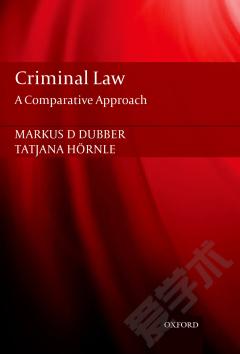Organised Crime and the Law —— A Comparative Analysis
----- 有组织犯罪和法律:比较分析
1 Introduction I. The Comparator Jurisdictions II. The Legal Framework III. The International Dimension IV. The Theoretical Lens V. Structural Outline 2 Organised Crime: Defining, Measuring and Criminalising the Problem I. Introduction II. Defining Organised Crime III. The Extent of the Problem IV. Criminalising Organised Crime V. What are Organised Crimes? VI. New State Agencies VII. Conclusion 3 The Theoretical Framework: Tensions in Criminal Justice I. Introduction II. Competing Demands in the Criminal Process III. The Judiciary and Due Process - Dialogue Between the Arms of the State IV. Conclusion 4 Investigating Organised Crime: Altering the Pre-trial Process I. Introduction II. Access and Disclosure Orders III. Suspicious Activity Reports IV. Surveillance V. Covert Human Intelligence Sources VI. Controlled Deliveries VII. Detention VIII. Interrogation IX. Conclusion 5 Prosecuting Organised Crime: The Criminal Trial 1 I. Introduction II. Procedural Law Changes III. Threats to Jurors and Witnesses IV. Threats to Jurors V. Threats to Witnesses VI. Conclusion 6 Punishing Organised Crime: The Post-Conviction Stage of the Criminal Process I. Introduction II. General Principles of Sentencing III. Sentencing Organised Crimes IV. Reduction of Sentences in Return for Assistance V. Confiscation of Property upon Conviction VI. Further Ancillary Orders VII. Conclusion 7 Beyond the Criminal Realm: Civil Asset Recovery I. Introduction II. The Irish Prototype III. The Proceeds of Crime Acts IV. Interaction between Confiscation and Recovery Powers V. Challenges to Civil Recovery VI. Success of the Civil Process VII. Further Civil Orders VIII. Conclusion 8 Revenue Matters: Taxing Organised Crime I. Introduction II. Taxing the Profits of Illegal Acts III. Appeals against Tax Assessments IV. Challenges to Revenue Powers V. Interplay between Civil Recovery and Revenue Powers VI. Conclusion 9 Conclusion I. Introduction II. Explaining the Dominant Narrative III. Recalibrating the Criminal Justice Process IV. Key National Differences V. Concluding Remarks
{{comment.content}}








 京公网安备 11010802027623号
京公网安备 11010802027623号